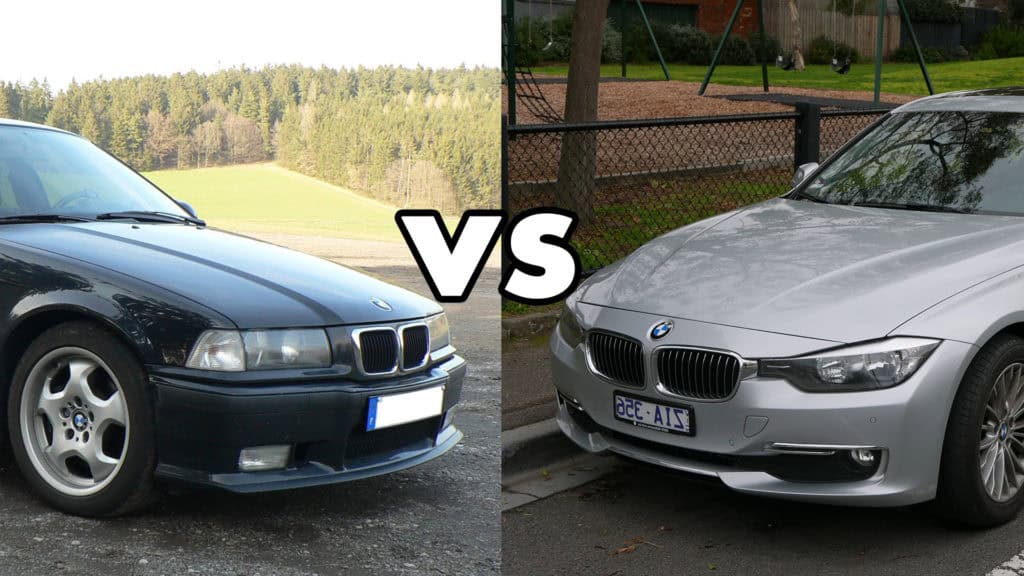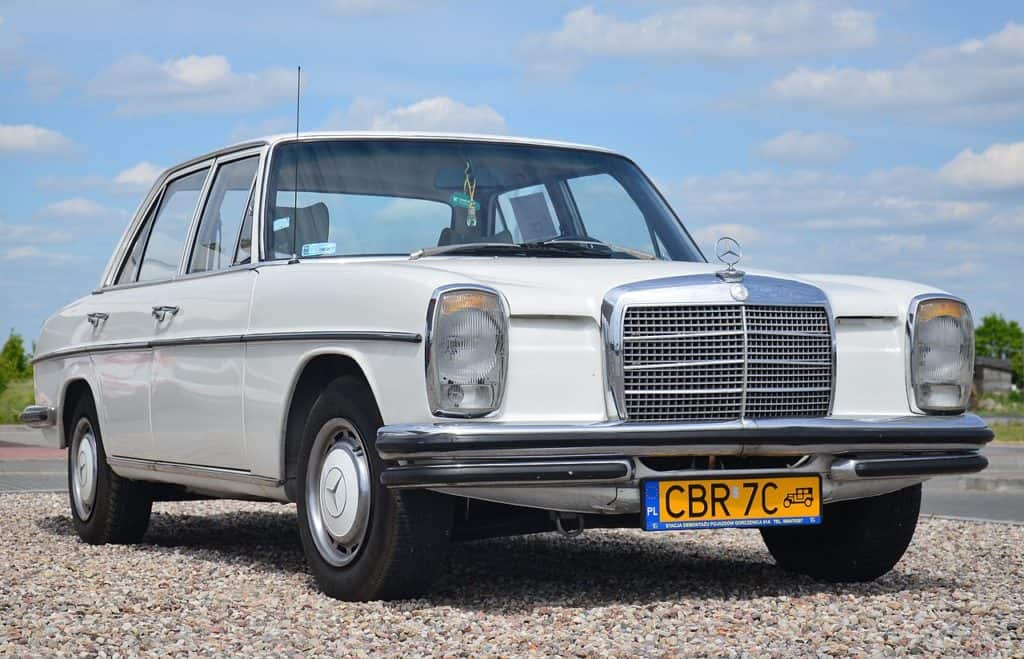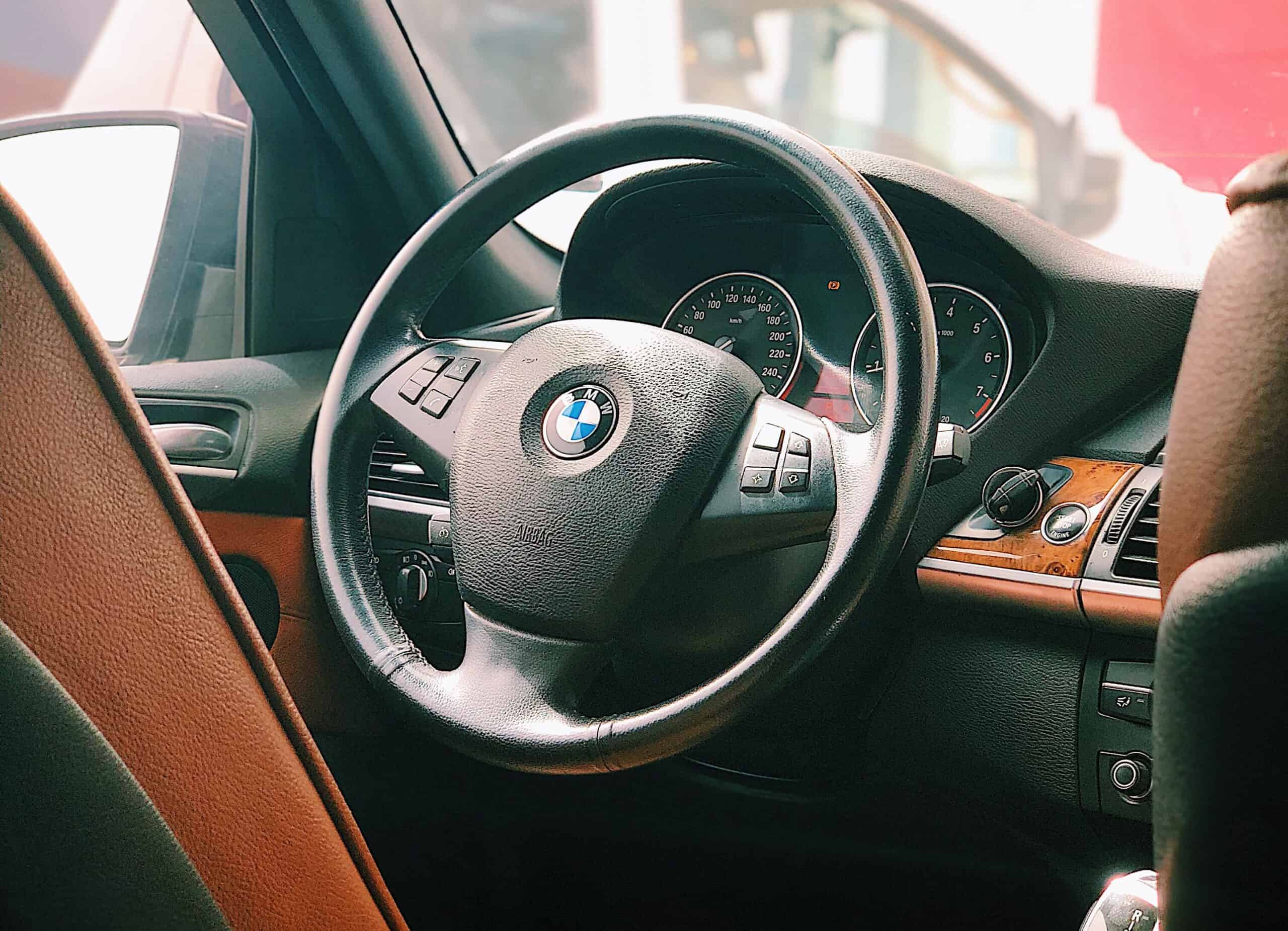Contemporary BMWs vs pre-2000 models – what are the differences?
Automobile corporations are churning out huge numbers of vehicles and more and more new models every year. The race has been going on for many years and there is no end in sight. Customers, under the onslaught of all-encompassing advertisements presenting the next new model as better, more efficient, faster, safer, feel lost and confused by this plethora of information. A very common question to a trusted service is: “What model should I choose? I want to buy a new car, but I don’t know which one to choose.” Answering such a question is very difficult and should certainly be honest i.e. not laden with the desire for potential profit. But before we try to answer such a question, let’s go back to a basic comparison of vehicles regardless of brand, but depending on the year of manufacture.

BMW E36 vs BMW F30 | By Neef – 2 [GFDL or CC BY-SA 3.0] | Public Domain
Official advertisement for the new BMW 5
Old cars are better
There is a well-established view that the so-called “old generation” cars were more robust and did not break down as often as modern ones. The Mercedes 200 or older BMW models are cited as primary examples. Is this just a so-called conspiracy theory of history, or is there some truth in it?

Mercedes-Benz 220D | By 1bumer[CC BY-SA 4.0
The truth, as usual, is in the middle. Modern manufacturing technologies, excellent materials available to the public and advances in design make it possible to build a vehicle that would be indestructible in the literal sense of the word. Engines with ceramic components that achieve gigantic mileage, new technologies for the production of Teflon-based oils, excellent and trouble-free electronics and computer support – all this makes it possible to create a vehicle available for mass production that would be able to break the trouble-free mileage records of old Mercedes and BMWs. Mileages above one million kilometers would no longer be a sensation, but the norm.
Just what’s next?
With conglomerate sales at 2 million vehicles per year (BMW’s figures from previous years) and limited volume demand, the market would be saturated within a few years. What would follow would be massive factory closures and the resulting consequences. Prior to the closure of GM factories in the United States, the US government intervened, subsidizing the failing factories to prevent mass unemployment and the social unrest associated with it.
Among other things, this is why it is impossible to release vehicles that will stay on the market for too long. Automotive is a huge branch of the economy in many countries, there are a great number of cooperators around car factories, resulting in millions of employees, whose fate depends on the demand for the end result, i.e. vehicles.

BMW 3 Series from E21 to E90 | By CrazyD[CC BY-SA 3.0
Predetermined lifespan of cars
Thus, more and more car models are being built, whose service life was “programmed” at the construction stage under pressure from economists and accountants. With the design methods available today, it is possible to construct mechanisms with a predetermined life span very precisely.
Common in many corporations to extend the warranty for a period of 2 – 5 years gives an image of just such a “programmed” period, after which repair or further operation will not be profitable, or sometimes even impossible, for design or technological reasons. How to deal with such a phenomenon?

The Eternal Light Bulb – has been shining continuously since 1890. It’s living proof of the achievement of superior technology back in the late 19th century
How to live?
One can, of course, remain a loyal fan of pre-2000 vehicles, which is widely regarded as the magic date of change in vehicle design. One can also shift to new-generation vehicles by taking advantage of increasingly common vehicle financing methods. The goal of the corporations is to have access to vehicles that are matched to the buyer’s financial capabilities, not as a purchase but as a long-term rental.
In just a few years it will be common to use, but not own, a new vehicle for a few years for a small “subscription fee” and change to the next new model. In this way, corporations will be assured of a market for their products, and users will have constant access to new models of vehicles of their choice. However, there will always remain a loyal group of “road veterans” who will keep the reliable pre-2000 models of BMW and other manufacturers alive at the expense of their time.


